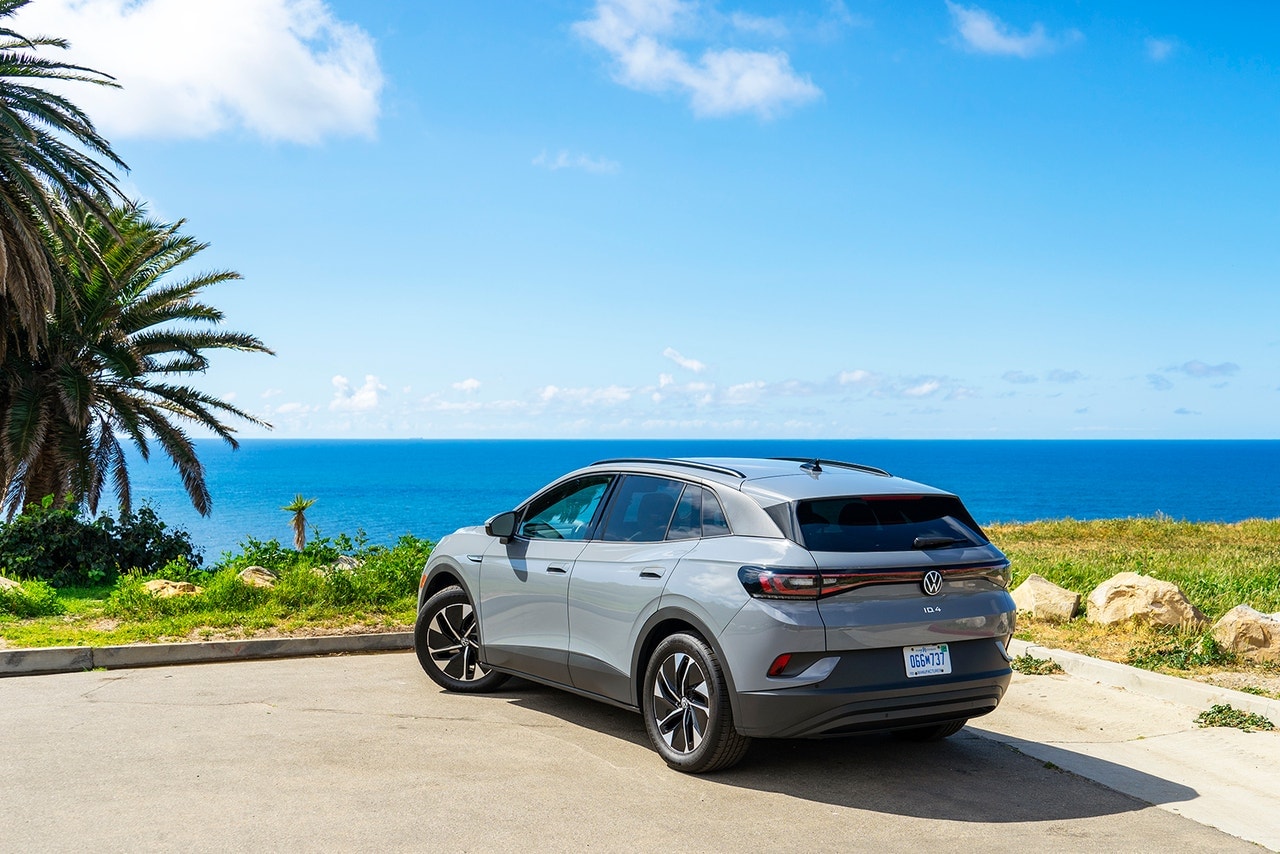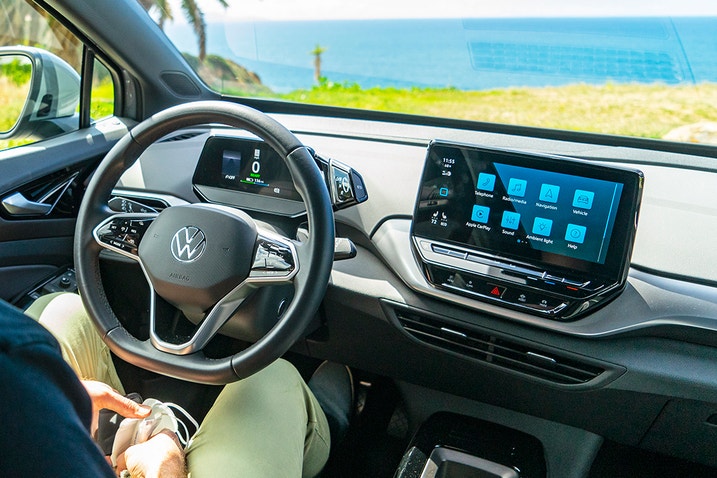- We drove our long-term ID.4 a little over year and found it pleasant to live with.
- Single-motor version powertrain offers adequate acceleration.
- In-cabin technology could have been much better.
One Year With the 2021 Volkswagen ID.4: Range, Charging and Daily Driving
Lots to like, with a few frustrations
It's time to part ways with our beloved long-term 2021 Volkswagen ID.4 after 14,704 miles on the odometer. VW’s first U.S.-market EV since the e-Golf was a tremendous improvement over its predecessor, which was reflected in its very competitive 7.9 out of 10 overall rating. After a yearlong ownership experience, we found a lot to like, but also a few flaws that grated over time.
Here’s what we learned.
The ID.4 was pleasant to drive and maintenance was simple
Our loaner was as basic as it came: a rear-wheel-drive ID.4 Pro. Its single motor produced a respectable 201 horsepower and was paired to a sizable 82-kWh battery pack. While it wasn't as speedy as the dual-motor all-wheel-drive variant, we found our RWD ID.4 had ample pace to move in and out of traffic with ease. The ID.4 was a great commuter that provided a smooth and pleasant ride experience. One of our staffers recounted, "You see, I drive the VW and it just feels right. The acceleration curve is smooth, the suspension does a good job absorbing bumps, it feels well built, and together these qualities help my gripes fade away.” (More on those gripes later on.)
Routine maintenance visits can sometimes be a hassle, but that wasn’t the case with our ID.4. News Manager Cameron Rogers explained, "Because the ID.4 is an electric vehicle — and thus lacks many of the fluids that need to be routinely changed in vehicles powered by internal combustion — the two scheduled services generally amount to a series of inspections.” We only took the ID.4 in for service once at the 10,000-mile mark, and it was a breeze. Volkswagen’s Carefree Coverage program includes the first two service visits free of charge, so we did not spend a dime on maintenance throughout our ownership.
Am I Ready for an EV?
- EV ownership works best if you can charge (240V) at home or at work This typically means a 240V home installation, but you could also have a similar setup at your office or other places your car is already parked for several hours each day. Don't expect a regular household outlet (120V) to suffice unless you've got a plug-in hybrid, in which case overnight charging at home is feasible.
- If you can’t charge at home, charging at a charging station could take at least 10x longer than at a gas station With public charging infrastructure still in its infancy, the user experience can be maddeningly inconsistent. Tesla owners tend to rave about the reliability and speed of the company's proprietary Supercharger stations, but rival DC fast options have thus far been plagued by technical issues and overcrowding. It's an evolving landscape and our best advice is to do your research on the available options for the EV you want to buy.
- Adding a 240V home charging system could cost up to $1,600 or more If your existing electrical service can handle the additional demands of EV charging, you may be able to add Level 2 charging at home for less than a grand, including installation. But your costs will multiply if you need to upgrade your electrical panel or add a dedicated circuit.
Efficiency was a strong suit
Our ID.4 ended up being one of the most efficient EVs we’ve recently had in our fleet. Over the length of our yearlong test, we averaged 34.8 kWh per 100 miles, just a touch worse than the EPA's estimate of 34 kWh/100 miles. However, its single most efficient fill was 29.3 kWh/100 miles, which we achieved while running the ID.4 on our real-world EV range test.
This test was doubly important to determine maximum range, as our team drove the VW an average of 100 miles before recharging, often starting at 80% charge (the recommended state of charge for typical driving). The test loop, on the other hand, measures an electric vehicle's maximum range, from a full charge down to zero. On our loop, we noted a best range of 288 miles, surpassing the EPA’s 260-mile estimate. We never broke this record during our long-term test.
In-car tech was disappointing
Most of our editors' pain points revolved around the touchscreen and associated controls. To start off, there are hardly any physical knobs or buttons in the cockpit. The ID.4 employs capacitive touch buttons throughout the cabin, and while they certainly look clean, these buttons behaved like primitive electronics. They frequently failed to recognize presses, forcing us to stab at the touch panels multiple times before our commands registered.
Our ID.4 came with wireless Apple CarPlay and Android Auto. Sadly, omnipresent connectivity issues meant we often had to break out the old Lightning or USB-C cord. Some drivers reported having trouble with simply connecting to the system while others experienced the connection dropping when it was already in use. In addition, the touchscreen interface was simply awful. One of our staffers claimed it to be “one of the buggiest touchscreens (he’s) ever seen.” A software update made some improvements but didn't fix everything. Ultimately, we felt the technology and user interface in our ID.4 were aggravating.
Edmunds says
Our ID.4 was reasonably priced, had enough range for the daily commute, and was generally easy to live with. If Volkswagen had spent a little more time on the human-machine interface, it could have been a top pick in its class.







 by
by